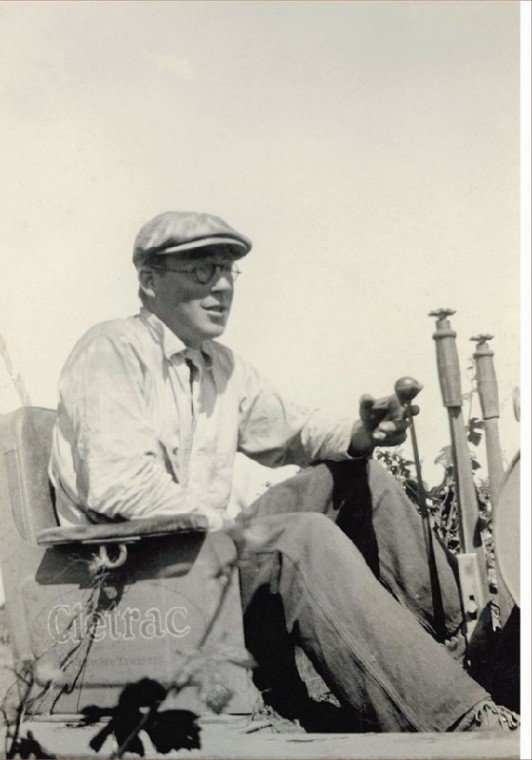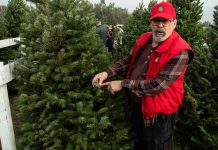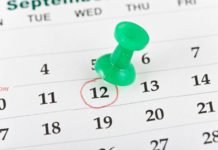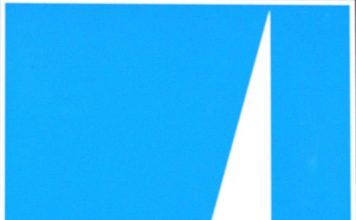A couple of years ago, my wife and I were engaged by a
publishing company to write profiles of several winemakers for
inclusion in a book called WineStyle Monterey County.
A couple of years ago, my wife and I were engaged by a publishing company to write profiles of several winemakers for inclusion in a book called WineStyle Monterey County. And, being lovers of wine and insatiably curious about the people who make it, we accepted the assignment. Oh, yeah, there was one other reason: we were to be paid for our work, and we dearly love having shelter over our heads and food to eat.
One of the gentlemen I was assigned to interview was a really nice guy named Charles F. Wagner, II. An eager, knowledgeable man in his early 20s, he goes by Charlie.
One gray morning, I met Charlie at his barrel room in the midst of a vineyard on the eastern side of the Salinas Valley, high up on a slope of the Santa Lucia Highlands. The chardonnay he makes there is called Mer Soleil, named for the two elements that hold sway over its grapes, the cooling sea and the warming sun.
When we met that morning, Charlie was accompanied by his father, Chuck Wagner, who oversees the vineyard.
We all took a jaunty ride through the property, father and son schooling me on the subtle differences between one block of vines and another, the differences that just a few extra minutes of shade per day or a slight elevation change can have on the fruit.
Later, we spent a while tasting from the barrels. I learned first-hand how those subtleties are translated into the sometimes radically diverse flavors present in grapes produced by what is essentially the same plant in a slightly different location or environment.
All the while, Charlie and Chuck were really great, patiently explaining winemaking processes and techniques with this Bozo writer who knew more about Bud than Bordeaux.
I went back to my little garret, armed with my notes, the media packet sent along by Phyllis Turner, their wonderful marketing manager, and a box containing a couple of bottles of wine for me to taste. (Oh – and a huge sack full of the Meyer lemons they also grow there. Phyllis later e-mailed me a recipe for preserved lemons in which you quarter them and pack them in a Mason jar with kosher salt. Sounds weird, but they’re really good. I also made a batch of lemoncello, a refreshing Italian liqueur made from lemon zest. We bottled that up and gave it to friends for Christmas.)
After transcribing my notes, I took a look at the Web site Phyllis had directed me to. Saying the Mer Soleil site wasn’t finished yet, she sent me to www.caymus.com.
I wondered why I was being directed to the site of one of the best known and finest Napa Valley wineries. I clicked on the “history” link and there was a photo of Chuck Wagner.
No one had said a word about these guys being the Wagners that make Caymus, one of California’s most highly regarded Cabernet Sauvignons. About being two generations of a family that has been growing grapes and making wine (except for during Prohibition, of course) in Napa Valley since 1906. Or about this being the younger Wagner’s first shot at making wine after spending his entire life to date working in and around wine.
So I was a bit surprised. I called Phyllis and asked why no one said anything. “We want the focus to be on Mer Soleil,” she said. So, the story I wrote for WineStyle focused on the Chardonnay they grow in Monterey County. I don’t think I mentioned the family connection. Now I can.
The Wagners set foot in America in 1885. The family came from Alsace, a region between France and Germany that has had its share of political turmoil through the centuries.
Also its share of celebrities: the philosopher Jean-Paul Sartre and Nobel Peace Prize winner Albert Schweitzer called Alsace home, as did the family of Groucho, Chico, Harpo and Gummo Marx. (Apropos of nothing, here is one of my favorite Groucho quotes: “Well, art is art, isn’t it? Still, on the other hand, water is water! And east is east, and west is west, and if you take cranberries and stew them like applesauce they taste much more like prunes than rhubarb does. Now, uh … Now you tell me what you know.”)
The Wagners eventually found themselves in the San Francisco Bay area and lived through the 1906 earthquake, after which they bought land in the Napa Valley.
The family built a winery in 1915 and made as many as 30,000 gallons of wine per year until the enactment of the Volstead Act put them out of business in 1920.
Charlie Wagner bought acreage near Rutherford in 1941. On his new 73-acre property he and his wife Lorna planted grapes and began making wine.
As the years passed, they gained a reputation as skilled vintners and winemakers. In the 1960s, they planted the first of the Cabernet Sauvignon vines that would produce the wines that would put the Wagner family on the world wine map.
… to be continued.














